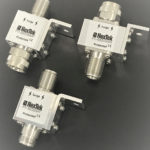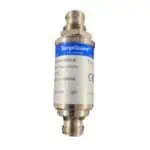News & Events
January 13, 2016
Are Compact Form Factors Important when Selecting an EMI Filter? – Feedthrough Filter Design Spotlight
 Feedthrough EMI/RFI filters are available with many different form factors and circuit designs…From simple C-type filters to L-C and multistage “Pi” filters (C-L-C), there is a wide range of solutions that exist on the market. For many applications where space is at a premium, selecting the most compact filter that will meet requirements can be a critical design and component-selection factor! In other words, compact solutions can be extremely important!
Feedthrough EMI/RFI filters are available with many different form factors and circuit designs…From simple C-type filters to L-C and multistage “Pi” filters (C-L-C), there is a wide range of solutions that exist on the market. For many applications where space is at a premium, selecting the most compact filter that will meet requirements can be a critical design and component-selection factor! In other words, compact solutions can be extremely important!
Practical Example: Oftentimes during the design of complex piece of high-power equipment, EMI/RFI testing and compliance must be done well after the initial design and development stages. This can be due to incorrect modeling or estimates of EMI/RFI levels, too little attention being paid the issue in general, or the application of a new requirement sometime down the line. If you are facing the challenge of adding a filter to an existing design and system where there was never a filter previously, filter size becomes critical!
Summary: There is a wide range of available filter designs, form factors, and circuit designs available on the market today, but there are many applications and programs where a Compact Form Factor is just as important to the selection process as the basic filter performance factors (such as xx dB of Insertion Loss and the thru-current rating.)
How do NexTek solutions differ?: NexTek’s HPR family of high current filters are C-type devices and utilize small form factor capacitors inside, which saves the maximum amount of space, footprint, and weight for a given thru-current rating. This allows maximum filtering performance with minimal space impact!
More about the HPR Series of Feedthrough Filters: NexTek HPR Series of EMI/RFI feedthrough filters incorporate some advance design techniques that are unique within the industry, allowing high filtering performance to be maintained to extremely high frequency ranges. When this high filtering performance is combined with other design factors such as their extremely rugged construction, high frequency filtering performance, and the wide range of available Cap Values and Voltage Ratings.
Learn More:
Product Family Page – High Current Filters (link)
Article – High Current Filtering, Pt 1 (link to blog post)
Article – High Current Filtering, Pt 2 (link to blog post)
Filter Design Spotlight – High Frequency Filtering Performance (link to blog post)
Resources Page (link)
Get A Free Quote
Or Call 978-486-0582




